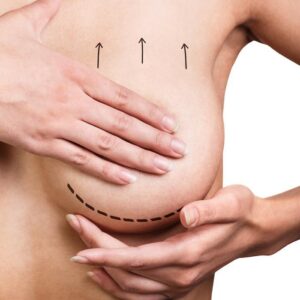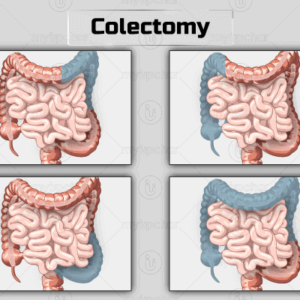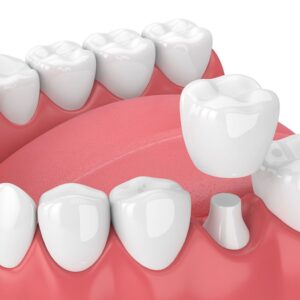Description
Familiarity with treatment
Labiaplasty is a surgical procedure that aims to alter the labia minora (inner labia) and/or the labia majora (outer labia), which are the folds of skin surrounding the vulva. The specific details of the procedure can vary depending on the patient’s needs and the surgeon’s approach. Here is a general explanation of the procedure:
Consultation and Evaluation: The process begins with a consultation with a qualified plastic surgeon who specializes in labiaplasty. During this consultation, you will discuss your concerns, goals, and expectations. The surgeon will evaluate your individual case, examine the labia, and determine the most appropriate surgical approach.
Anesthesia: Labiaplasty can be performed under general anesthesia, local anesthesia with sedation, or local anesthesia alone. The choice of anesthesia will depend on the treatment plan discussed with your surgeon and your preferences.
Surgical Techniques: There are different surgical techniques that can be used for labiaplasty, and the specific technique employed will depend on the patient’s unique needs. The two main techniques are:
a. Trim Labiaplasty: In this technique, the surgeon trims the excess tissue along the outer edge of the labia minora and sutures the incisions. This technique is suitable for patients with excess tissue along the edges of the labia minora.
b. Wedge Labiaplasty: This technique involves removing a wedge-shaped piece of tissue from the labia minora and suturing the remaining edges together. This technique is suitable for patients who desire a reduction in the size of the labia minora while preserving the natural contour.
Incisions and Closure: The surgeon will make incisions in inconspicuous areas of the labia, and excess tissue will be removed or reshaped according to the chosen technique. The incisions are then closed using fine, dissolvable stitches. The goal is to achieve a balanced and natural appearance while addressing the patient’s specific concerns.
Recovery: After the procedure, you will be given specific postoperative care instructions to follow. This may include guidelines on wound care, pain management, activity restrictions, and follow-up appointments. It is important to follow these instructions closely to ensure proper healing and minimize the risk of complications.
Who is it suitable for?
Labiaplasty may be suitable for individuals who have specific concerns or conditions related to the appearance or function of their labia. Here are some factors to consider based on the information from the search results:
Medical Conditions and Discomfort: Labiaplasty may be considered for individuals with medical conditions or discomfort related to the labia. This could include conditions causing physical discomfort, irritation, or functional issues that can be addressed through surgical intervention.
Cosmetic Concerns: Many individuals opt for labiaplasty for cosmetic reasons, seeking to alter the appearance of their labia. This may involve reducing the size of the labia minora or addressing aesthetic concerns related to the labial area.
Abnormalities and Functional Benefits: In some cases, labiaplasty may be appropriate for individuals with congenital conditions or abnormalities affecting the labia. Additionally, the procedure may offer functional benefits for those experiencing difficulties with exercise, hygiene, urinary tract infections, or discomfort during physical activities.
Psychological Considerations: Prior to committing to surgery, individuals may be advised to speak to a counselor or psychologist, particularly if the decision to undergo labiaplasty is driven by psychological or emotional factors.
Who is it not suitable for?
Labiaplasty may not be suitable for everyone, and there are certain factors that may make an individual ineligible for the procedure. Here are some considerations based on the information from the search results:
Age: Labiaplasty is generally not recommended for individuals who are under the age of 18, as the labia may still be developing and changing during adolescence. It is important to wait until the labia have fully matured before considering surgery.
Pregnancy and Breastfeeding: It is generally advised to postpone labiaplasty until after completing pregnancy and breastfeeding. Pregnancy and breastfeeding can cause changes in the labia, and it is recommended to allow the body to stabilize before considering any surgical interventions.
Current Infections or Medical Conditions: If an individual has an active infection or medical condition affecting the genital area, it may be necessary to address and resolve those conditions before considering labiaplasty. It is important to have a healthy and stable medical condition before undergoing any surgical procedure.
Unrealistic Expectations: Labiaplasty should not be pursued solely to meet societal or external pressures or to achieve an idealized appearance. It is essential to have realistic expectations and understand the limitations and potential outcomes of the procedure.
Psychological Factors: It is important for individuals considering labiaplasty to have a stable psychological and emotional state. If the decision to undergo labiaplasty is driven by psychological distress or body dysmorphic disorder, it may be recommended to seek counseling or psychological support before proceeding with surgery.
Advantages
Labiaplasty offers several potential advantages, although it’s important to note that individual experiences and outcomes may vary. Here are some potential benefits mentioned in the search results:
Improved Comfort and Reduced Discomfort: Labiaplasty can address concerns related to discomfort or irritation caused by enlarged or elongated labia minora. By reducing the size or reshaping the labia, the procedure may alleviate physical discomfort during activities such as exercise, wearing tight clothing, or sexual intercourse.
Enhanced Hygiene: Excess tissue in the labia minora can make hygiene more challenging and increase the risk of bacterial growth. Labiaplasty can remove the excess tissue, making it easier to maintain proper hygiene and potentially reducing the risk of urinary tract infections and other related health concerns 1.
Improved Appearance and Self-Confidence: For individuals who are self-conscious about the appearance of their labia, labiaplasty can provide aesthetic improvements. By reducing the size or reshaping the labia, the procedure may help individuals feel more confident and comfortable with their genital appearance 2.
Functional Benefits: Labiaplasty may offer functional benefits for individuals with labial abnormalities or asymmetry. The procedure can help create a more symmetrical and balanced appearance, potentially improving overall genital function and comfort.
Part of a Mommy Makeover: For individuals who have experienced changes in their labia due to pregnancy and childbirth, labiaplasty can be part of a mommy makeover procedure. This combination of cosmetic procedures aims to restore the pre-pregnancy body and address various concerns, such as sagging or enlarged labia 1.
Complications
Labiaplasty, like any surgical procedure, carries a certain degree of risk. However, complications and side effects tend to be minor when performed by experienced surgeons who have performed a large number of these procedures 1. Here are some potential complications mentioned in the search results:
Bleeding and Hematoma: As with any surgical procedure, there is a risk of bleeding during or after labiaplasty. In some cases, a collection of blood called a hematoma may form, requiring drainage or additional treatment.
Infection: Although the risk of infection is generally low, there is a possibility of developing an infection at the surgical site. This risk can be minimized by following proper post-operative care instructions and maintaining good hygiene.
Swelling and Bruising: Swelling and bruising are common after labiaplasty and usually subside over time. However, excessive swelling or bruising should be monitored and reported to the surgeon.
Scarring: Labiaplasty incisions are typically made in inconspicuous areas to minimize visible scarring. However, there is still a possibility of scarring, which can vary in appearance and texture. Most scars fade over time but may remain slightly visible.
Asymmetry: Achieving perfect symmetry is challenging, and there is a risk of slight asymmetry after labiaplasty. However, skilled surgeons strive to create a balanced and natural appearance.
Nerve Damage: In rare cases, labiaplasty may result in nerve damage, which can cause altered sensation or pain in the treated area. This risk can be minimized by choosing a skilled and experienced surgeon.
Poor Wound Healing: Some individuals may experience delayed wound healing or poor wound closure, which may require additional treatment or revision surgery.
preoperative care
The preoperative care for labiaplasty may vary depending on the specific surgeon and clinic. However, here are some general considerations mentioned in the search results:
Medical Evaluation and Clearance: Before undergoing labiaplasty, it is typically recommended to obtain a medical evaluation and clearance from your primary care doctor. This may include laboratory testing and, in some cases, evaluation by a specialist. It is important to complete any preoperative requests or tests as instructed by your surgeon, usually at least two weeks before the surgery 1.
Preoperative Instructions: Your surgeon will provide you with specific preoperative instructions to follow. These instructions may include guidelines on medications to avoid, such as aspirin, which can increase the risk of bleeding. It is important to adhere to these instructions to ensure the best possible outcome 2.
Psychological Evaluation: In some cases, a detailed medical consultation may be carried out to assess your psychological well-being and ensure that your motivations for undergoing labiaplasty are appropriate. This may involve consulting with a psychiatrist, psychologist, or psychosomatic specialist.
Understanding and Consent: It is crucial to have a complete understanding of the procedure, including its risks, benefits, and potential outcomes. Your surgeon will provide you with detailed information and obtain your informed consent before the surgery 3.
Preoperative Medications: Your surgeon may prescribe pain medication or provide a postoperative kit with instructions on wound care and the proper care of the surgical site. It is important to follow the instructions provided and have any necessary medications on hand for the postoperative period 2.
Postoperative care
The postoperative care for labiaplasty may vary depending on the surgeon and clinic. Here are some general considerations mentioned in the search results:
Follow Surgeon’s Instructions: It is crucial to carefully follow the postoperative instructions provided by your surgeon. These instructions may include guidelines on wound care, medication usage, and activity restrictions. Adhering to these instructions can help promote proper healing and minimize the risk of complications.
Managing Discomfort: It is common to experience some discomfort, swelling, and bruising after labiaplasty. Your surgeon may prescribe pain medication or recommend over-the-counter pain relievers to manage any discomfort. Applying cold compresses or ice packs to the surgical area may also help reduce swelling.
Maintaining Hygiene: Keeping the surgical area clean and dry is important for proper healing. Your surgeon may provide specific instructions on how to clean the area and may recommend using a gentle, non-irritating cleanser. It is important to avoid using harsh soaps, fragrances, or douches in the area.
Avoiding Strenuous Activities: It is generally advised to avoid strenuous activities, including exercise and heavy lifting, for a certain period of time as recommended by your surgeon. This allows the surgical area to heal properly and reduces the risk of complications.
Follow-Up Appointments: Your surgeon will schedule follow-up appointments to monitor your healing progress. It is important to attend these appointments as scheduled and discuss any concerns or questions you may have.
Potential Signs of Complications: It is important to be aware of potential signs of complications, such as excessive bleeding, severe pain, infection, or abnormal swelling. If you experience any concerning symptoms, it is important to contact your surgeon promptly.





Reviews
There are no reviews yet.